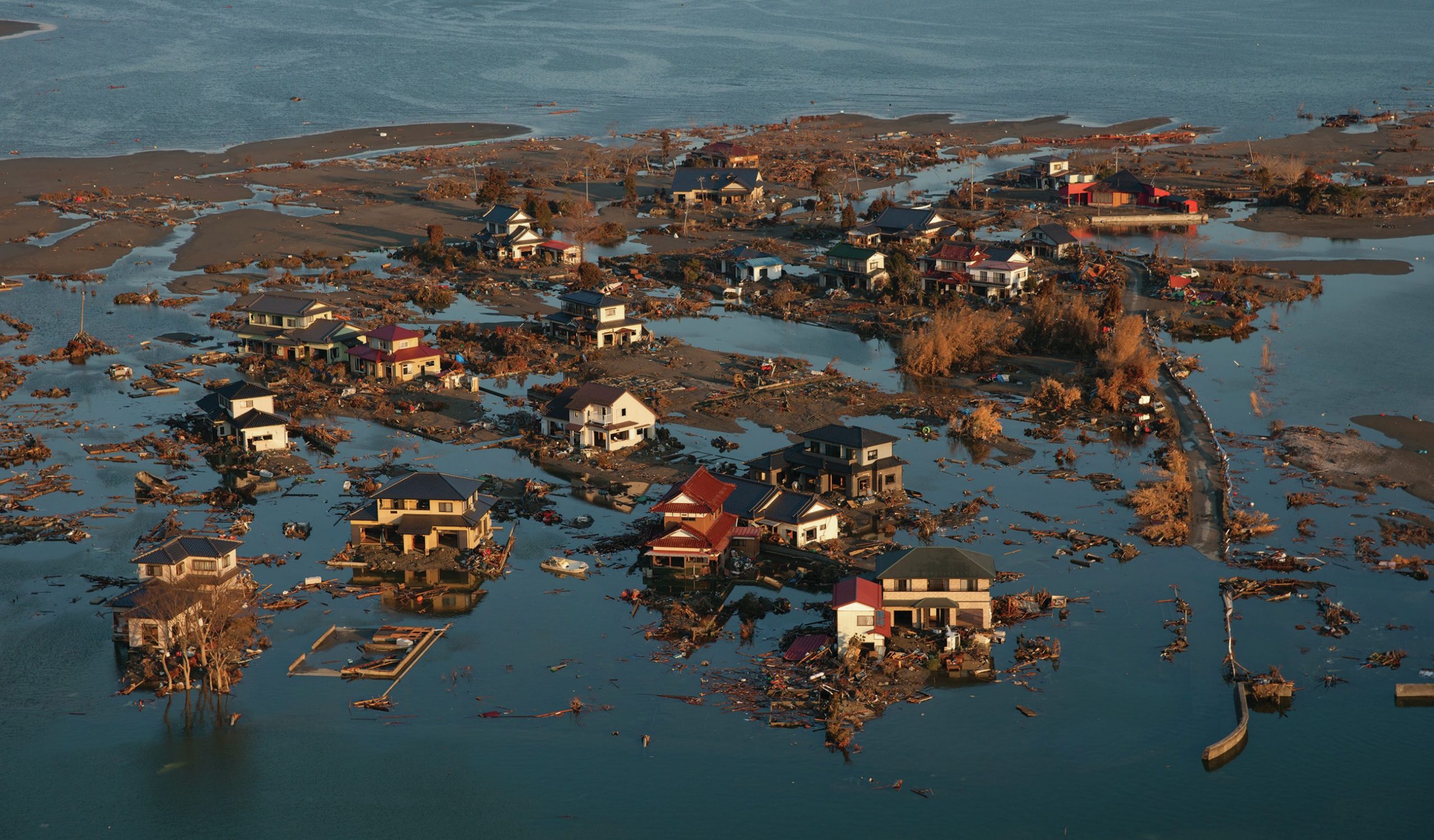
The term ‘tsunami’, derived from a Japanese word meaning ‘harbour wave’, describes one of the world’s most destructive natural hazards. Tsunamis are formed when a disturbance on the sea floor leads to the generation of large waves which spread out across the ocean. This disturbance usually occurs as a result of earthquake activity, although submarine landslides and volcanic eruptions have also caused large tsunamis.
In the open ocean these waves travel at high speeds (usually greater than 450 km h−1) and are characterised by very long wavelengths and low wave heights. However, as the tsunami reaches shallower water towards the shore, friction with the sea bed leads to a decrease in wave speed, causing the water to pile up (Figure 1). This dramatic increase in wave height leads to energetic, rapid coastal flooding with particularly damaging effects in populated low-lying areas.
Your organisation does not have access to this article.
Sign up today to give your students the edge they need to achieve their best grades with subject expertise
Subscribe




